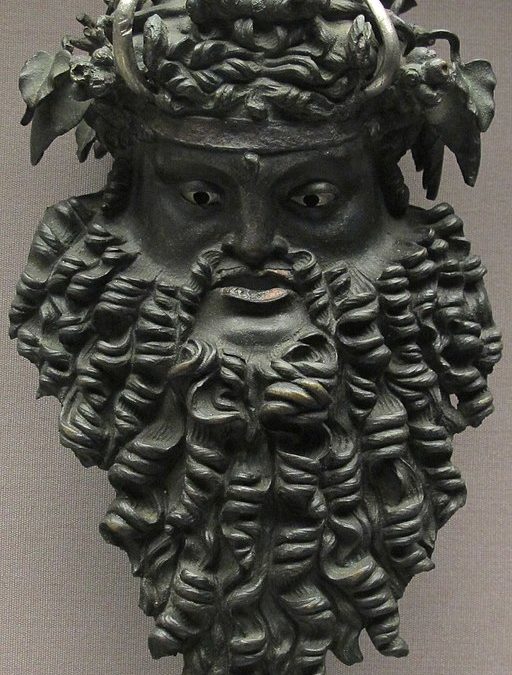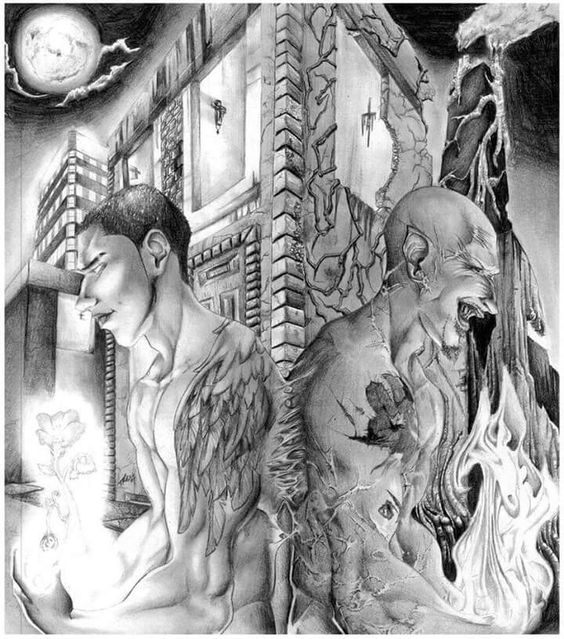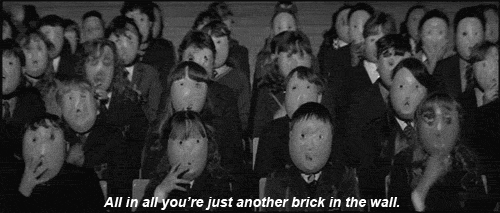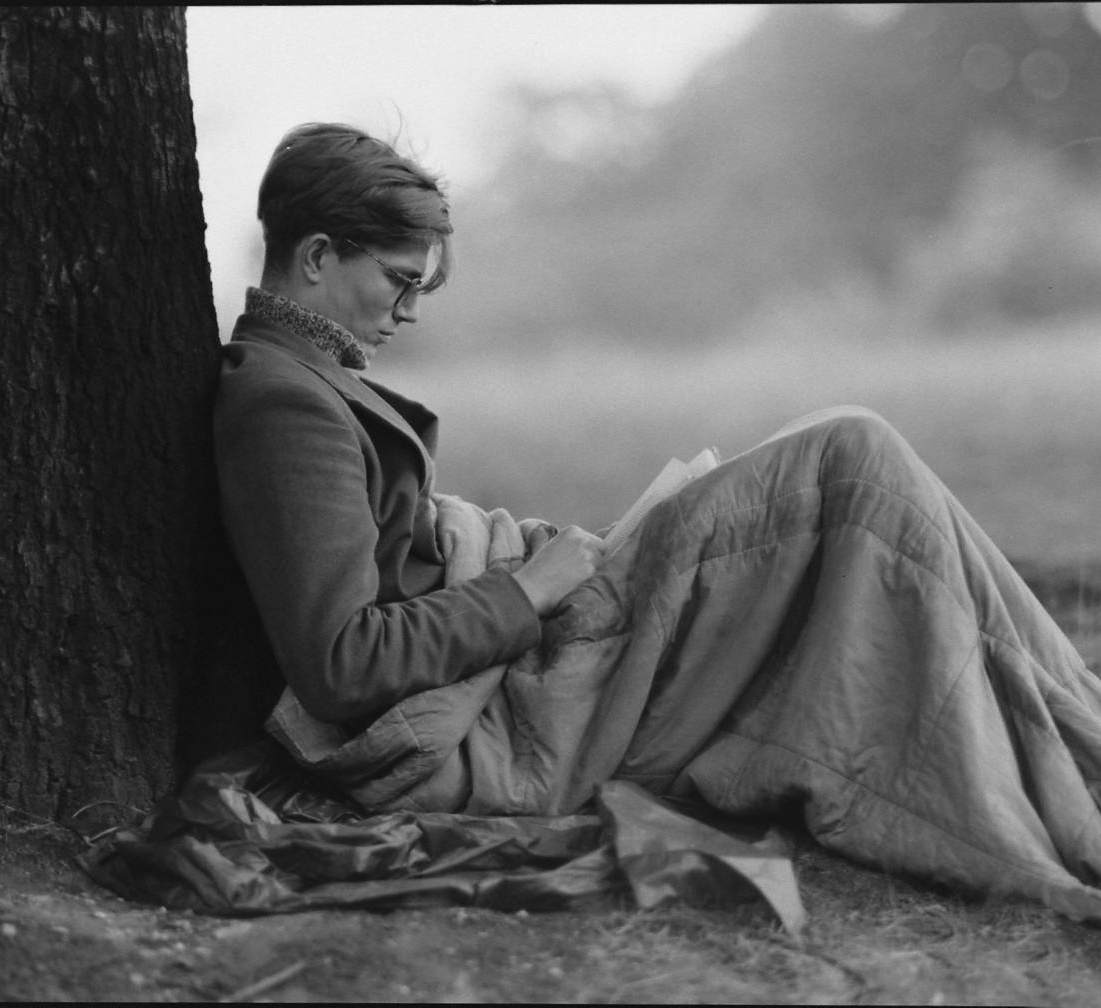
by Moe | Aug 28, 2018 | Brain, Demons, Gnosis
“The person you call ‘you’ lives in the left side of your brain.” – Colin Wilson
My research into the Gnostic and Christian Science of Human Duality has led me to some very interesting people. One such person that I would like to introduce to you in case you have never come across his Great Work is the late British Philosopher and author, Colin Wilson.
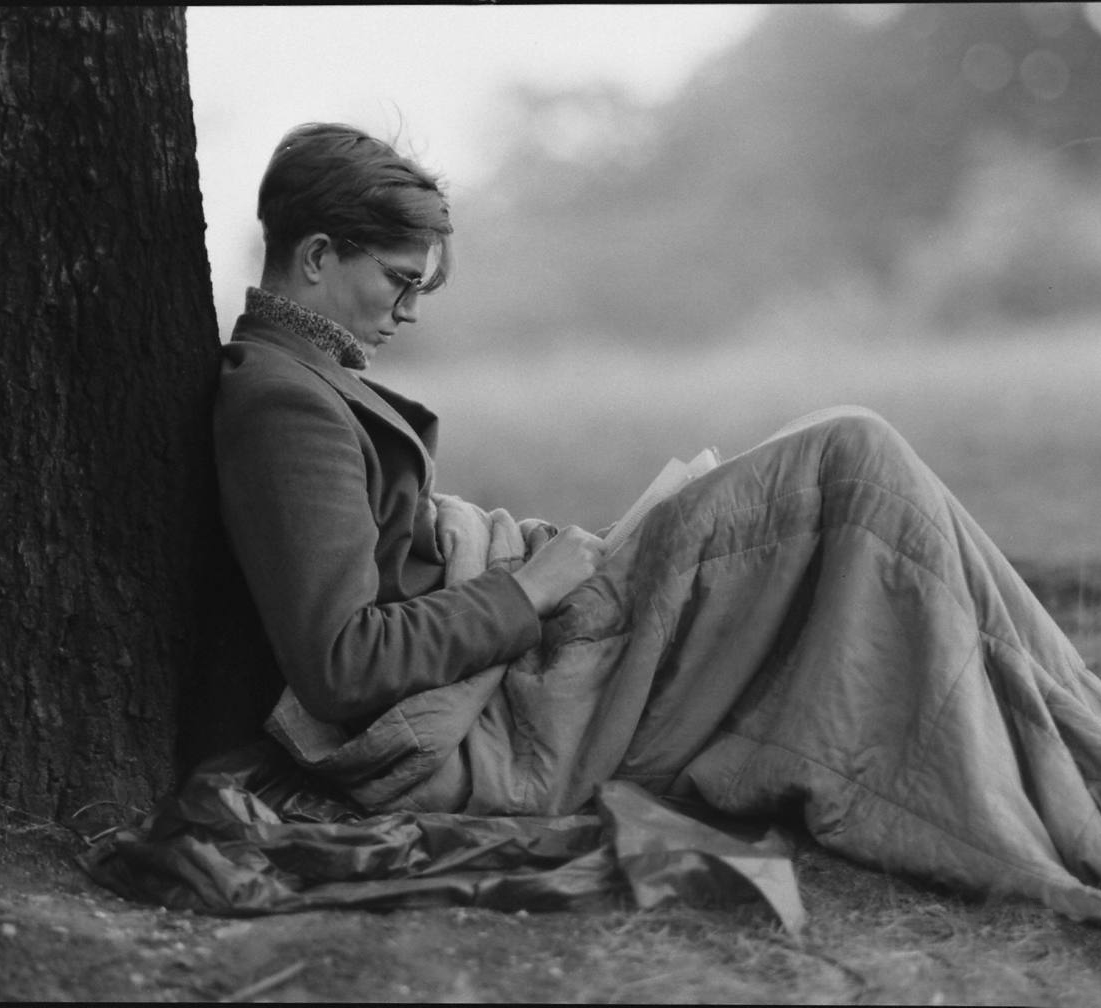
Wilson was an English writer, philosopher, and novelist had written well over 150 books in his long career. Books that have impacted millions of people around the world like “The Outsider, Mind Parasites and the Occult.”
Over the past several months I have been studying Wilson’s body of work and I have watched many interviews with the author. What I have found is an interesting correlation with my own research on Duality and Wilson’s main underlying theme in his books which deals with a human psychic condition that he likes to call “the Robot.”
He had even said in several interviews that all his books were based on this single premise.
Wilson had written in The Other Side; “AS I APPROACH the age of fifty — just twice the age at which my first book, The Outsider, appeared — I realise more clearly than ever that my life has been dominated by a single obsession: a search for what I call ‘the other mode of consciousness’.”
Author, Gary Lachman who was a friend of Wilson and author of his autobiography, In Beyond the Robot said that it’s “the central human problem.”
In Wilson’s mind, “the Robot” was how our consciousness operates on ‘auto-pilot’, narrowing our perception so as to enable us to handle everyday life – and the need to get beyond it in order to evolve. He believed “the Robot” controlled the part of our brains that in our modern culture has become over-used and over-developed.
Wilson’s theory was originally based on the facts that ‘psychologically,’ we consist of three major components: the left- brain, the right-brain, and the “robot” which he first believed to be located in the small posterior section of the brain known as the pre-frontal cortex. But he said that after ten years of research he later came upon a crucial 1960’s study that threw a new light on his work which resulted in what he called ‘revelatory.’
In Chapter Two of Frankenstein’s Castle, The Riddle of the ‘Two Selves,’ Wilson explains how the research in 1960’s by Michael Gazzaniga and Nobel Prize-winning research of Roger Wolcott Sperry on split-brain patients changed his mind. It was after thoroughly studying this research he had come to the conclusion that the seat of our conscious ‘ego’ is the left side of the brain and the seat of the unconscious is the right.
He writes, “FOR SOME REASON that no physiologist yet understands, human beings have two brains. Or rather, the brain they possess is ‘double’ — almost as if a mirror had been placed down the middle, so that one half reflects the other. We seem to have two hearing centres, two visual centres, two muscle control centres, even two memories.
Why this should be so is baffling — one guess being that one of the brains is a ‘spare’ in case the other gets damaged. What seems even odder is that the left half of the brain controls the right side of the body, and vice versa.”
He goes on to explain the research of Sperry and Gazzaniga who studied a human patient whose brain had been split to prevent epileptic attacks.
Wilson had written about the patient; “He seemed to be perfectly normal, except for one oddity — which they expected anyway. He could read with his right eye, but not with his left. It had been known since the nineteenth century that, in human beings, the two halves of the brain seem to have different functions: ‘right for recognition, left for language’.
People who had damage to the right cerebral hemisphere were unable to recognise simple patterns, or enjoy music, but they could still speak normally,” Wilson said.
He further explained, “People with left-brain damage were able to recognise patterns, but their speech was impaired. Obviously, then, the left deals with language, and you would expect a split-brain patient to be unable to read with his right eye (connected, remember, to the opposite side of the brain).
Sperry’s patient was also unable to write anything meaningful (i.e. complicated) with his left hand. They noticed another oddity. If the patient bumped into something with his left side, he did not notice. And the implications here were very odd indeed.
Not only did the split-brain operation give the patient two separate minds; it also seemed to restrict his identity, or ego, to the left side,” Wilson said.
He further explains how split-brain patients see the world with each side of the brain proving the left hemisphere is an unconscious observer with no verbal abilities and the right hemisphere is the conscious side or the real you (I AM).
Wilson had written; “When they placed an object in his left hand, and asked him what he was holding, he had no idea. Further experiments underlined the point. If a split-brain patient is shown two different symbols — say a circle and a square — with each eye, and is asked to say what he has just seen, he replies ‘A square’.
Asked to draw with his left hand what he has seen, and he draws a circle. Asked what he has just drawn, he replies: ‘A square’. And when one split-brain patient was shown a picture of a nude male with the right-brain, she blushed; asked why she was blushing, she replied truthfully: ‘I don’t know.’
The implications are clearly staggering. The person you call ‘you’ lives in the left side of your brain.
And a few centimetres away there is another person, a completely independent identity. Where language is concerned, this other person is almost an imbecile. In other respects, he is more competent than the inhabitant of the left-brain; for example, he can make a far more accurate perspective drawing of a house. In effect, the left-brain person is a scientist, the right-brain an artist.”
Wilson concluded, “These, then, are the basic facts about the two halves of the brain.”
It was a Eureka moment for Colin Wilson and in my opinion, also for the ancient teachings of Gnosticism.
In my opinion, it was if the old science of Gnostic Duality had been truly validated!
Wilson further said, “The left ego is the master of consciousness; the right is master of the unconscious.
And the relation between the two is not unlike the relation between Laurel and Hardy in the old movies. He said “Ollie is the left-brain, the boss. Stan takes his cues from Ollie. When Ollie is in a good mood, Stan is delighted. When Ollie is depressed, Stan is plunged into the depths of gloom. Stan is inclined to over-react.”
Wilson concluded, “Because it feels lost, bewildered, unsure of itself, the conscious ego”—our left brain—“searches obsessively for meaning.” In the process “it has achieved more in three thousand years of bicameral consciousness than in the previous million years of inner unity.”
Wilson had said that the use of psychedelic drugs can turn off certain chemical messengers which results in a form of ‘primal perception.’ He had written in The Other Side;
“The robot seems to be located in the brain. This is clear from the effects of psychedelic drugs like LSD and mescalin, which apparently achieve their effect by paralyzing certain ‘chemical messengers’ in the brain. The result is certainly a form of ‘primal perception’— as Aldous Huxley noted when he took mescalin; he quoted Blake’s statement: ‘If the doors of perception were cleansed, every thing would appear to man as it is, infinite.’ So cleansing the ‘doors of perception’ is basically a matter of brain physiology.”
Who is the Robot?
Wilson stated that we each have a “robotic” level of consciousness that helps operate almost as a machine or what we can call a taskmaster. It is that side of our brains that can handle the various things in life that do not take much thought and interaction once you have learned the task. It also works unconsciously to help us to identify and deal with threats in our environment.
In describing his own personal experiences with the Robot, Wilson said in many interviews that he has even caught the Robot making love to his wife. He stated that when he or anyone was in this mode, they go into almost a trance-like robotic state where they do not truly enjoy the experiences of life.
One example Wilson describes of the robotic trance-like state is when people first learn to drive they are conscious of all the nuances of driving such as steering, changing gears and braking but after a certain amount of time, we find ourselves performing these tasks almost effortlessly.
The “Robot has taken over” and the “task is learned.”
Wilson had written; “This robot is a labor-saving device. When an activity has been performed often enough, he takes it over, and what is more, he does it a great deal more efficiently than I could do it consciously…..But, the robot has taken over too many functions.”
He also mentions a man named Julian Jaynes in his book Atlantis and the Kingdom of the Neanderthals: 100,000 Years of Lost History. He said that Jaynes realized that man is trapped in a grey world created by the left cerebral hemisphere, the ‘scientific’ part of the brain.
In Wilson mind, this is both a good and bad thing.
He said that when we let the Robot take over our lives, the wonder of our amazing world will have little or no meaning to us. We no longer appreciate the beauty in life like a sunset or our children’s first steps. It is as if we were miserable zombies just going about our daily lives doing mundane tasks.
In a fascinating introduction to the left/right brain dichotomy, Wilson explains his theories in the book, Frankenstein’s Castle: The Right Brain: Door to Wisdom (Back cover). He published the book in 1980 after his research into the left and right brain and the recent findings related to lateralization of brain function.
The back cover of Frankenstein’s Castle: The Right Brain: Door to Wisdom reads:
“Man has two brains. This piece of information was probably gleaned when the first Stone Age axe cleaved the first human skull, yet only in the last century has it been confirmed that man also has two minds. In Frankenstein’s Castle Colin Wilson surveys the whole range of current two-brain research and draws some very personal conclusions.
He shows that, by some quirk of evolution, we are trapped in our left-hand brain, in a dark, dingy, limited half of “Frankenstein’s Castle’, while a few centimeters away another ‘me’, older, wiser and far more optimistic, exists independently. But the two brains, the two ‘me’s do have a connection – and a wealth of information, inspiration and happiness is available if we can somehow allow the current to flow between them.
He concludes, “If we can find the key to Frankenstein’s castle, we can claim our rightful inheritance.”
In the book, Wilson emphatically states that the left brain looks ‘inward’, the right ‘outward’.
Wilson discusses the development of the left-brain ego and states that the right-brain as criminal which controls our energy supply. Wilson proposes in the book the question ‘How can we persuade it to give us more?’
He also incorporates his research into occult powers such as clairvoyance, hypnosis, telepathy, dowsing, poltergeists and other ‘supernatural’ phenomenon which are all deemed to be the work of right-brain consciousness. The right brain is also the cause of multiple personalities and paranormal powers.
How do we take our lives back from the Robot?
Wilson says that our Robot experiences life on a daily basis from a “worm’s eye view,” seeing only that which is in front of us. He stated that we can reach peak experiences and live full lives when we consciously step back and look at the big picture from both the worm’s eye view and the bird’s eye view.
In Colin’s mind and his own personal experiences, this worm’s eye view and the bird’s eye view suddenly and spontaneously merge, we can reach these “peak experiences” to then appreciate life in a whole new way. Wilson stated that humans can reach “peak performance” when we learn to use all of our brains by re-engaging the right side of the brain in our daily activities so we can reach a heightened state of consciousness and energy.
A peak experience is a moment accompanied by a euphoric mental state often achieved by self-actualizing individuals. Expressing one’s creativity, quest for spiritual enlightenment, pursuit of knowledge (Gnosis), and the desire to give to and/or positively transform society are examples of self-actualization.
Research shows that when people live lives that are different from their true nature and capabilities, they are less likely to be happy than those whose goals and lives match. For example, someone who has an inherent potential to be a great artist or teacher may never realize his/her talents if their energy is focused on attaining the basic needs of humans.
The concept of peak performance was originally developed by Abraham Maslow in 1964, who describes peak experiences as “rare, exciting, oceanic, deeply moving, exhilarating, elevating experiences that generate an advanced form of perceiving reality, and are even mystic and magical in their effect upon the experimenter.”
There are several unique characteristics of a peak experience, but each element is perceived together in a holistic manner that creates the moment of reaching one’s full potential. Peak experiences can range from simple activities to intense events; however, it is not necessarily about what the activity is, but the ecstatic, blissful feeling that is being experienced during it.(Wikipedia)
Wilson stated that in order to have a truly full and rich life, we must find a way to control this Robot by keeping it on a leash. What Wilson meant by this is that if we become aware of its functions, and understand how it helps us in life, we can not only appreciate the Robot, we can control it and use it to our advantage.
In the book, New Pathways in Psychology, Wilson noted that “it is one of the absurd paradoxes of psychology that it has taken three centuries to reach the conclusion that man actually possesses a mind and a will.” (p.47).
Wilson used a type of imaginative engagement or what we can call a Western Mediation strategy to help bring both hemispheres into sync. One way to reach the peak experience was to do what he called the “pen trick” where you stared at a pen held against a wall until “attention becomes fatigued, at which point a final burst of concentration will give access to the peak experience”.
Wilson’s “pen trick” appears to be simply self-taught meditation.
As many of you know, to meditate, many people will perform a single-pointed concentration in which they focus on one thing or one word or phrase allowing no other thoughts to interrupt your laser focus. Meditation trains the mind or induces a mode of consciousness that allows people to control their thoughts and ultimately, themselves. Hence, they are in control of their “own will (the steering wheel for our brains).”
You see, the human will is the key to Wilson’s solution to the problem of the Robot controlling the human psychic condition. He said we must be conscious of how we are living and if we are acting in a robotic way, we must take back the steering wheel to our brains from the Robot.
Once we are aware of our own Robot or what the Gnostics would call Duality, we can then become aware of who we are and how our bodies, brains, and minds operate. We become conscious beings who understand the knowledge of the Truth of who we are and how to have rich and full lives or what can be called “peak experiences.”
This knowledge (Gnosis) can then be used via your true spiritual will. It then becomes a choice and an act of will to take our minds and bodies back from the robot from the steering wheel and put him/her in the passenger seat.
I love this explanation of Colin Wilson’s ideas of human evolution by Geoff Ward from ColinWilsonsWorld.com
Ward explains that Wilson came to understand evolution not as a mechanical process, driven by ‘survival of the fittest’, but with the goal of increased consciousness and enjoying the process while you walk the path. He regarded life as not a dreary existence, but a splendid descent into matter ie: the material realm in order to discover the true spirit of self which gives us all the greatest freedom to live and give purposeful meaning in order to colonize it.
I will conclude with an ominous warning by Hermann Hesse that Wilson included in his book. The message is to Europe about a ‘primeval, occult, Asiatic ideal’ — an ideal he calls ‘Russian man’ that prophetically seems to deal with current events.
In the twentieth century, Hermann Hesse has been one of the few major writers to understand this; in Glimpse into Chaos (1919), he warns Europe against being taken over by a ‘primeval, occult, Asiatic ideal’ — an ideal he calls ‘Russian man’.
Russian man, he says, ‘is not to be adequately described either as a “hysteric” or as a drunkard or
criminal, or as a poet and holy man, but only as the simultaneous combination of all these characteristics’.
What Hesse is describing here is the future revolutionary man whose resides in Golgatha (The Skull) with Christ at the Logos ie: Meaning reason which has always been “The Middle Path.”
The place of our Lords and our own crucifixion.
A Gnostic Warrior whose character is not unlike the ‘revolutionary’ alter-ego of Louis Vive.
